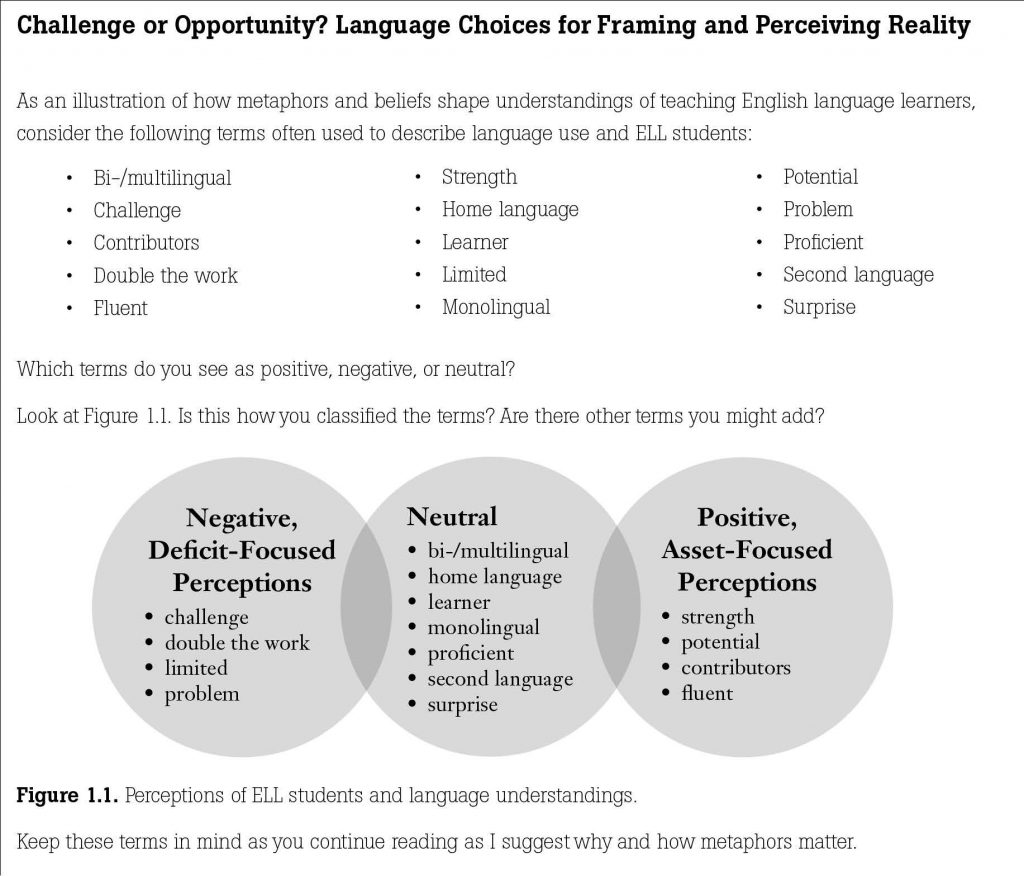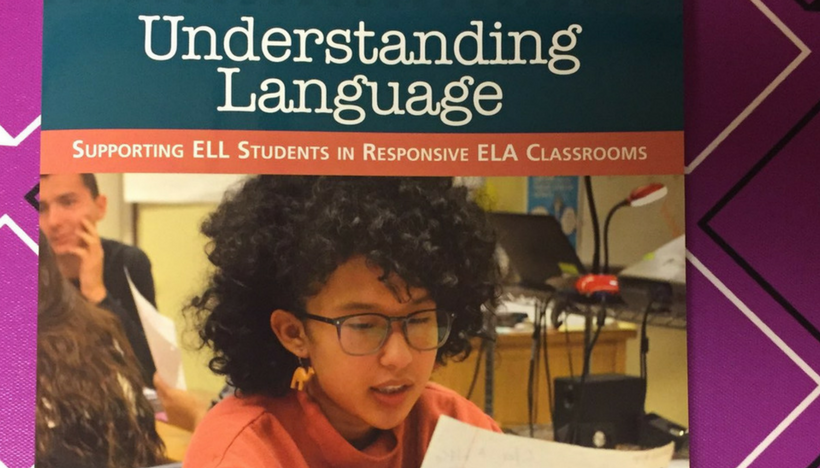This post was written by member Melinda McBee Orzulak.
Why Understanding Language Has Benefits for All
Understanding language is key to improving ELA instruction for all students. Our mainstream ELA classrooms provide crucial opportunities for academic and interpersonal language learning, and these opportunities are even richer in a multilingual classroom.
But when I first started teaching English, I needed resources to fully experience the joys of understanding how language is used in multiple and exciting ways in the ELA classroom. If you’re like me . . .
- You may need more information about what the range of “language learners” looks like. You may need clarification about why some strategies are working and/or not working.
- You may just need some new ideas. You may be encountering linguistic diversity for the first time, in a new context, or with a new group of students.
- You may have a recent addition to your classroom who has changed the teaching and learning dynamic.
- You may be noticing variations in your students’ writing and reading approaches, strengths, and skills, but aren’t sure what to do next.
- Or you may be a new or preservice teacher who is aware of your limited preparation for teaching ELLs or who wants to extend your initial insights.
You are not alone. I’m painfully aware that my limited knowledge of ELL students stymied my own instruction at times, similar to the way, now that I’m a teacher educator and researcher, I see many new teachers approaching their English language learners—with surprises based on language and/or the complexity of linguistic diversity in their classrooms.
Learning to understand language remains an ongoing process due to the varied contexts, time periods, and interactions in which we live, learn, and teach.
The good news is that we can all find ways to get started today. I’m fortunate to share key tips that I’ve learned from the wonderful English teachers I’ve worked with while writing Understanding Language: Supporting ELL Students in Responsive ELA Classrooms, that focuses on an asset-based approach.
In this book, I explore how to understand language in new ways to benefit both our ELL and non-ELL students housed in the same classroom. Offering supportive teaching resources and ways for us to notice and understand the strengths of ELL students, the book offers strategies for respectful and rigorous instruction for all students as we consider our own cultural and linguistic expectations.
Five Ways to Get Started Today
Reap the Benefits of Understanding Language
- Consider your language choices. Our metaphors and beliefs shape our understandings of teaching English language learners. These choices can frame and shape our perceptions of reality. Do we focus on the linguistic strengths students bring? Or the challenge or problem of having ELL students in our classrooms? Ask yourself to see if you have an asset-based perspective in your classroom, school, and/or community. Do you use positive language and metaphors?

- Set up a two-way exchange. Seeing ourselves as intercultural communicators creates opportunities for two-way exchange that recognizes needs for mutual learning and appreciation. For example, Sewak, an early-career English teacher from Florida, sees ELL students in his classroom as a gift and assigns an About Me paper, which he models based on his own cultural background. This approach helps move to an asset-based approach, as all classroom members engage in cultural sharing.
- Unpack any language misunderstandings. Understanding language means considering how our own experiences, and those of our students, intersect with myths about language as well as with the oral, written, academic and social uses of language. We know that if dissonance occurs, students might not disclose their language histories. But we also know that students bring to the classroom many facets of identity that can lead to silencing or lack of motivation if interclass relationships aren’t addressed. That’s why it’s so important to think about how we talk about language and beliefs about language. To avoid misunderstandings, the responsive teachers I worked with approach their engagement with students through a positive, affirmative stance. Specifically, these teachers
- Avoid seeing language difference as a problem.
- Avoid taking on the role of language gatekeeper.
- Avoid ignoring the presence of linguistic diversity.
For example, avoiding a gatekeeper stance can mean continuing an in-class literary discussion based on the depth of students’ comments rather than fixating on a surface feature like accent or correcting their word choices.
- Plan ways to use language in the classroom as a resource. Look for ways that language in the classroom is a resource for learning. Do you know what your students’ first and/or additional languages might be? You may need additional methods for getting to know your students’ language resources (e.g. surveys or writing prompts). Then, consider ways to use your students’ language knowledge in class. Some teachers use students’ language knowledge to explore word origins. Other teachers consider their specific multilingual students as they purposefully select and frame texts to shape the community.
- Model and develop your empathy with language learning. We can develop our responsiveness through empathy. Language is an inherently personal part of our identities. Many Americans have barely delved into a second language ourselves. If you are like me, you don’t speak a second language fluently; your formal foreign language instruction probably began (and perhaps ended) at the secondary level. Advanced fluency in a language can take up to a decade to achieve, and this is the level of fluency often needed for content area learning. Consider the “Stages of Language Acquisition,” available from the Colorín Colorado site, and note your current stages for all languages you’ve tried to learn or want to learn. We can model for our students a key understanding: language learning is a long and complicated process. The process of learning a new language is not linear or applied evenly across contexts, language types, and demands.
Let’s Work Together
Finding resources and collaborating with others
Those are just five ways we can get started to support ELL students in responsive classrooms. One of my vital takeaways: collaborating with others makes us all more responsive teachers.
So, what about you— have you had successful experiences using language understandings to improve your English classes with ELL students? Do you have a tip for other ELA teachers who are trying to create more responsive classroom environments for their students?
 Melinda J. McBee Orzulak is an associate professor at Bradley University in Peoria, Illinois, where she teaches future teachers and serves as the English education coordinator. Before working as an English teacher educator in Illinois and Michigan, she taught high school English, writing, and humanities.
Melinda J. McBee Orzulak is an associate professor at Bradley University in Peoria, Illinois, where she teaches future teachers and serves as the English education coordinator. Before working as an English teacher educator in Illinois and Michigan, she taught high school English, writing, and humanities.
To read more of Melinda McBee Orzulak’s work:

